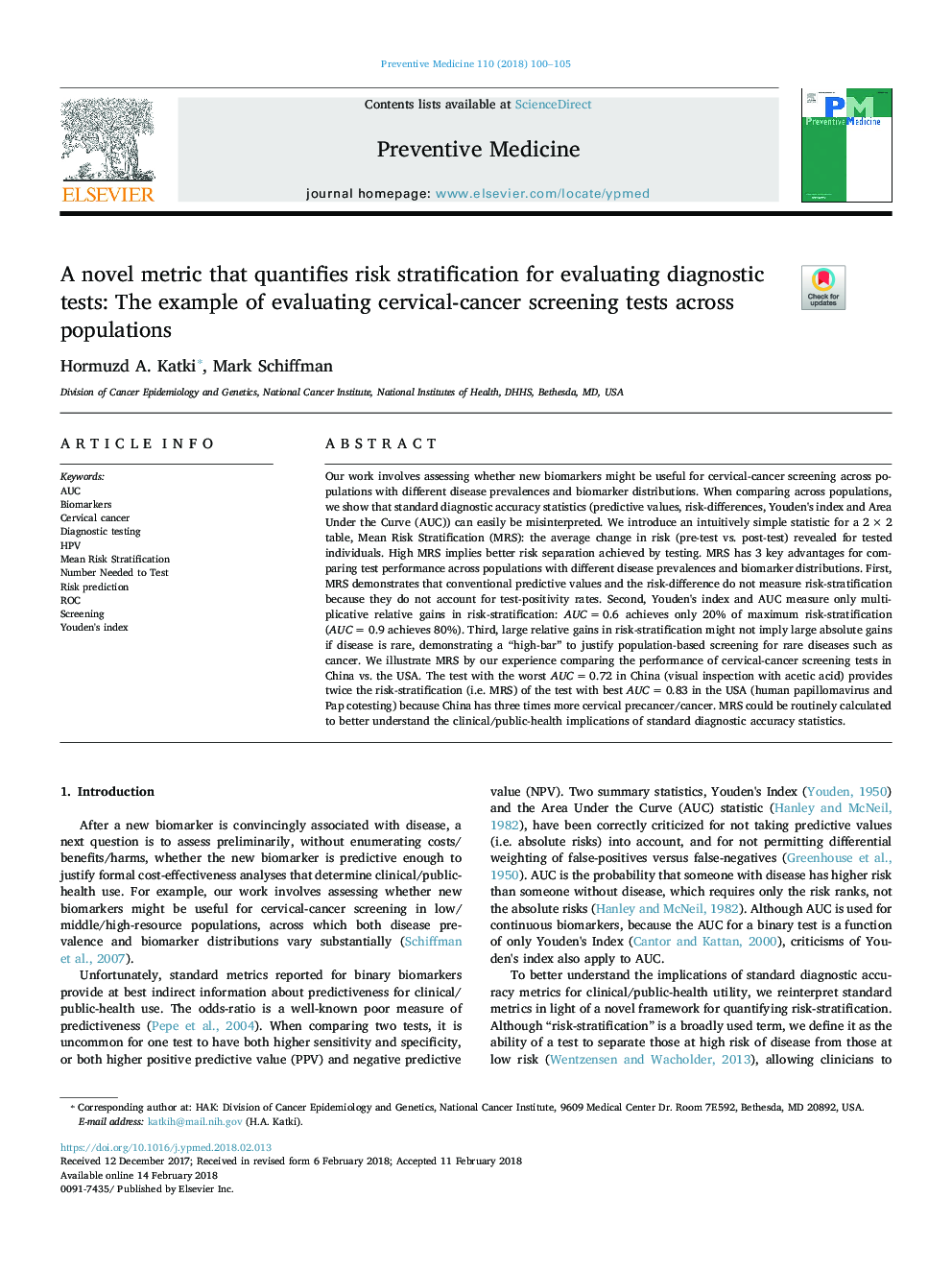| Article ID | Journal | Published Year | Pages | File Type |
|---|---|---|---|---|
| 8693547 | Preventive Medicine | 2018 | 6 Pages |
Abstract
Our work involves assessing whether new biomarkers might be useful for cervical-cancer screening across populations with different disease prevalences and biomarker distributions. When comparing across populations, we show that standard diagnostic accuracy statistics (predictive values, risk-differences, Youden's index and Area Under the Curve (AUC)) can easily be misinterpreted. We introduce an intuitively simple statistic for a 2â¯Ãâ¯2 table, Mean Risk Stratification (MRS): the average change in risk (pre-test vs. post-test) revealed for tested individuals. High MRS implies better risk separation achieved by testing. MRS has 3 key advantages for comparing test performance across populations with different disease prevalences and biomarker distributions. First, MRS demonstrates that conventional predictive values and the risk-difference do not measure risk-stratification because they do not account for test-positivity rates. Second, Youden's index and AUC measure only multiplicative relative gains in risk-stratification: AUCâ¯=â¯0.6 achieves only 20% of maximum risk-stratification (AUCâ¯=â¯0.9 achieves 80%). Third, large relative gains in risk-stratification might not imply large absolute gains if disease is rare, demonstrating a “high-bar” to justify population-based screening for rare diseases such as cancer. We illustrate MRS by our experience comparing the performance of cervical-cancer screening tests in China vs. the USA. The test with the worst AUCâ¯=â¯0.72 in China (visual inspection with acetic acid) provides twice the risk-stratification (i.e. MRS) of the test with best AUCâ¯=â¯0.83 in the USA (human papillomavirus and Pap cotesting) because China has three times more cervical precancer/cancer. MRS could be routinely calculated to better understand the clinical/public-health implications of standard diagnostic accuracy statistics.
Related Topics
Health Sciences
Medicine and Dentistry
Complementary and Alternative Medicine
Authors
Hormuzd A. Katki, Mark Schiffman,
